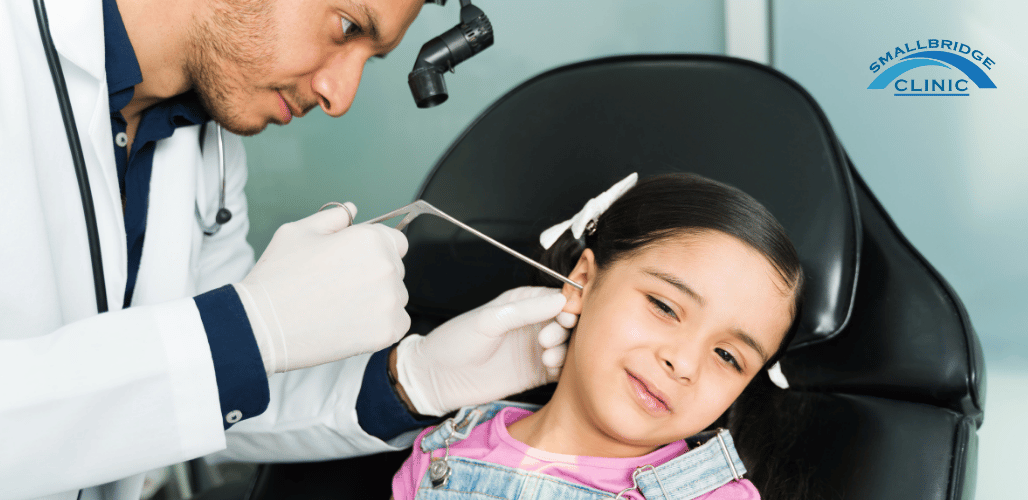
Microsuction of Ear Wax
Microsuction of ear wax is a medical procedure used to remove excess ear wax (cerumen) from the ear canal. This method is known for being safe, effective, and comfortable compared to traditional methods such as ear irrigation or manual removal. Here is a detailed overview of microsuction ear wax removal services following grant of CQC registration.
Key Components of Microsuction Ear Wax Removal
-
Initial Consultation and Assessment:
- Medical History: Discussion of the patient’s ear health, symptoms, and any previous issues with ear wax.
- Examination: Use of an otoscope or a microscope to inspect the ear canal and determine the presence and extent of ear wax build-up.
-
Procedure:
- Preparation: The patient is positioned comfortably, usually seated.
- Microscope Use: A binocular microscope or an otoscope is used to provide a clear, magnified view of the ear canal.
- Suction Device: A gentle, medical-grade suction device is used to carefully remove the ear wax. The suction device has a small, sterile nozzle that is inserted into the ear canal.
- Real-Time Visualization: The healthcare professional continuously visualizes the ear canal throughout the procedure to ensure precision and safety.
-
Post-Procedure Care:
- Re-examination: After the removal of the ear wax, the ear canal is re-examined to ensure all wax has been effectively removed.
- Advice: Providing the patient with advice on ear care and tips to prevent excessive ear wax build-up in the future.
- Follow-Up: Scheduling follow-up appointments if necessary, especially if the patient has chronic issues with ear wax accumulation.
Benefits of Microsuction Ear Wax Removal
-
Safety:
- Non-Invasive: The procedure does not involve the insertion of liquids or sharp instruments into the ear canal.
- Controlled: The use of a microscope allows for precise control and minimizes the risk of damaging the ear canal or eardrum.
-
Effectiveness:
- Thorough Removal: Microsuction can effectively remove both hard and soft ear wax, ensuring a clear ear canal.
- Immediate Relief: Patients often experience immediate improvement in hearing and relief from symptoms such as earache, fullness, and tinnitus.
-
Comfort:
- Minimally Disruptive: The procedure is generally quick and comfortable, causing minimal discomfort compared to traditional methods.
- No Preparation Needed: Unlike ear irrigation, there is no need for pre-treatment with ear drops to soften the wax.
Indications for Microsuction Ear Wax Removal
- Symptoms of ear wax blockage, such as hearing loss, earache, fullness in the ear, or tinnitus.
- Persistent ear wax build-up that does not respond to over-the-counter treatments.
- Ear wax removal needed for medical reasons, such as before a hearing test or to clear the ear canal for examination.
- Individuals with certain ear conditions (e.g., perforated eardrum, middle ear infection) for whom ear irrigation is not recommended.
Safety and Considerations
- Qualified Practitioners: Ensure the procedure is performed by trained healthcare professionals, such as audiologists or ENT specialists.
- Patient Comfort: The procedure should be stopped immediately if the patient experiences pain or significant discomfort.
- Medical Conditions: Patients with certain ear conditions or a history of ear surgery should inform the practitioner before the procedure.
Typical Microsuction Procedure
- Preparation: The patient’s medical history is reviewed, and the ear is examined to confirm the presence of ear wax.
- Procedure: The patient is seated comfortably, and the practitioner uses a microscope and suction device to remove the ear wax.
- Post-Procedure: The ear is re-examined, and the patient is given advice on ear care.
Post-Procedure Advice
- Avoid Cotton Swabs: Patients are advised against using cotton swabs or other objects to clean the ear canal, as this can push wax further in and cause impaction.
- Regular Check-Ups: Regular ear check-ups can help monitor ear wax build-up and prevent blockages.
- Ear Care: Keeping ears dry and using ear protection in dusty or dirty environments can help reduce ear wax accumulation.
Microsuction ear wax removal is a highly effective and safe method for addressing ear wax blockages, offering immediate relief and minimal discomfort. It is a preferred choice for many healthcare providers and patients due to its precision and effectiveness.
Hearing Tests and Hearing Aids Fitting Service
Hearing tests and hearing aids fitting services are essential components of audiological care, aimed at diagnosing hearing loss and providing effective solutions to improve hearing and communication. Here is a comprehensive overview of these services:
Hearing Tests
Types of Hearing Tests
-
Pure-Tone Audiometry:
- Air Conduction Testing: Uses headphones to deliver sounds at various pitches and volumes to each ear. Patients indicate when they hear a sound, helping to determine the quietest sounds they can hear at different frequencies.
- Bone Conduction Testing: Involves a small device placed behind the ear that sends sound directly to the inner ear through the bones of the skull, bypassing the outer and middle ear. This helps identify where the hearing loss is occurring.
-
Speech Audiometry:
- Speech Reception Threshold (SRT): Determines the lowest level at which a patient can understand speech.
- Word Recognition Score (WRS): Measures how well a patient can recognize and repeat words at a comfortable volume level.
-
Tympanometry:
- Assesses the function of the middle ear by varying air pressure in the ear canal and measuring the movement of the eardrum. This helps detect fluid, ear infections, or eustachian tube dysfunction.
-
Otoacoustic Emissions (OAEs):
- Measures sounds produced by the inner ear (cochlea) in response to an auditory stimulus. OAEs are used to screen for hearing loss, particularly in newborns and young children.
-
Auditory Brainstem Response (ABR):
- Evaluates the auditory nerve and brain pathways by measuring electrical activity in response to sound stimuli. It is used for diagnosing hearing loss in infants, young children, or individuals who cannot undergo standard hearing tests.
Process of a Hearing Test
-
Initial Consultation:
- Discussion of hearing concerns, medical history, and any symptoms the patient is experiencing.
-
Conducting the Tests:
- The audiologist performs a series of hearing tests based on the initial assessment and patient’s needs.
-
Interpreting Results:
- The audiologist reviews the results, explains the type and degree of hearing loss, and discusses potential treatment options.
Hearing Aids Fitting Service
Types of Hearing Aids
-
Behind-the-Ear (BTE):
- Sits behind the ear and is connected to an earmold or ear tip via a thin tube. Suitable for all degrees of hearing loss.
-
In-the-Ear (ITE):
- Custom-made to fit in the outer ear. Suitable for mild to severe hearing loss.
-
In-the-Canal (ITC) and Completely-in-the-Canal (CIC):
- Custom-made to fit partly or completely in the ear canal. Less visible and suitable for mild to moderately severe hearing loss.
-
Receiver-in-Canal (RIC) or Receiver-in-the-Ear (RITE):
- Similar to BTE but with the receiver placed in the ear canal. Suitable for mild to severe hearing loss.
Hearing Aids Fitting Process
-
Assessment and Selection:
- Based on the hearing test results, the audiologist recommends suitable hearing aids, considering the patient’s hearing loss, lifestyle, and preferences.
-
Ear Impressions:
- For custom hearing aids, the audiologist takes impressions of the ear canal to ensure a precise fit.
-
Hearing Aid Programming:
- The audiologist programs the hearing aids using specialized software to match the patient’s hearing loss profile.
-
Fitting and Adjustment:
- The patient tries on the hearing aids, and the audiologist makes adjustments to ensure comfort and optimal sound quality. This may include fine-tuning the volume, frequency settings, and other features.
-
Education and Training:
- The patient is educated on how to use, care for, and maintain the hearing aids. This includes inserting and removing the devices, changing batteries or charging them, and cleaning procedures.
-
Follow-Up Appointments:
- Scheduled visits to monitor the patient’s progress, address any issues, and make necessary adjustments to the hearing aids.
Benefits of Hearing Aids
- Improved Hearing: Enhanced ability to hear and understand speech, especially in noisy environments.
- Better Communication: Improved communication with family, friends, and colleagues, leading to a better quality of life.
- Increased Safety: Enhanced awareness of environmental sounds, such as alarms and traffic, improving safety.
- Mental Health: Reduction in feelings of isolation, anxiety, and depression associated with hearing loss.
Importance of Early Intervention
- Preventing Further Hearing Loss: Early detection and treatment can prevent further deterioration of hearing.
- Cognitive Health: Addressing hearing loss early can help prevent cognitive decline associated with untreated hearing loss.
- Enhanced Quality of Life: Improved hearing leads to better social interactions, job performance, and overall well-being.
Choosing the Right Provider
- Qualified Audiologists: Ensure services are provided by licensed and experienced audiologists.
- Comprehensive Care: Look for providers that offer a full range of services, from diagnosis to ongoing support and maintenance.
- Patient-Centered Approach: Choose a provider who prioritizes patient education, comfort, and satisfaction.
Hearing tests and hearing aids fitting services are crucial for individuals experiencing hearing loss. These services provide accurate diagnosis, effective treatment, and ongoing support to improve hearing and enhance quality of life.
